Sql Loop Through Table
SQL (Structured Query Language) is a powerful programming language used to manage and manipulate relational databases. One common requirement in SQL programming is to loop through a table to perform certain operations on each row. In this article, we will explore different techniques and strategies for looping through a table in SQL, along with practical examples and best practices.
1. Basic Syntax: Understanding the Structure of a SQL Loop through a Table
A SQL loop through a table involves iterating through each row of a table and performing a specific set of actions. The basic syntax for a SQL loop through a table is as follows:
“`
DECLARE @RowCount INT
SELECT @RowCount = COUNT(*) FROM TableName
DECLARE @Counter INT = 1
WHILE @Counter <= @RowCount
BEGIN
-- Perform operations on each row
-- Increment the counter by 1
SET @Counter = @Counter + 1
END
```
This basic structure initializes a counter variable to keep track of the current row being processed and loops through the table until the counter reaches the total number of rows in the table.
2. FOR LOOP: Iterating through Rows in a SQL Table using a LOOP statement
In some database systems, such as Oracle, a FOR LOOP statement can be used to iterate through rows in a SQL table. The syntax for a FOR LOOP is as follows:
```
FOR counter_variable IN (SELECT column_name(s) FROM table_name)
LOOP
-- Perform operations on each row
END LOOP;
```
The FOR LOOP statement simplifies the process of looping through a table by automatically handling the initialization, termination, and incrementation of the loop counter variable.
3. WHILE LOOP: Iterating through Rows in a SQL Table using a WHILE statement
A WHILE LOOP is a versatile construct that can be used to iterate through rows in a SQL table. The basic structure of a WHILE LOOP is demonstrated in the previous section. By using conditional statements within the loop, we can control the looping process based on specific criteria.
For example, let's say we have a table called "Employees" with columns "EmployeeID" and "FirstName". We can loop through the table and print the names of all employees using a WHILE LOOP as follows:
```
DECLARE @Counter INT = 1
DECLARE @RowCount INT
SELECT @RowCount = COUNT(*) FROM Employees
WHILE @Counter <= @RowCount
BEGIN
SELECT FirstName FROM Employees WHERE EmployeeID = @Counter
SET @Counter = @Counter + 1
END
```
In this example, the loop iterates through the table and retrieves the "FirstName" of each employee based on the current value of the counter.
4. CASE Statement: Using a Conditional Statement to Control the Looping Process
In some scenarios, we may want to perform different actions within a loop based on certain conditions. This is where the CASE statement comes in handy. By using a CASE statement within the loop, we can control the looping process based on specific criteria.
For instance, let's consider a table "Orders" with columns "OrderID" and "TotalAmount". We want to loop through the table and categorize each order based on its total amount. We can accomplish this using a CASE statement within the loop as shown below:
```
DECLARE @Counter INT = 1
DECLARE @RowCount INT
SELECT @RowCount = COUNT(*) FROM Orders
WHILE @Counter <= @RowCount
BEGIN
DECLARE @TotalAmount INT
SELECT @TotalAmount = TotalAmount FROM Orders WHERE OrderID = @Counter
SELECT OrderID,
CASE
WHEN @TotalAmount >= 100 THEN ‘High Value’
WHEN @TotalAmount >= 50 THEN ‘Medium Value’
ELSE ‘Low Value’
END AS AmountCategory
FROM Orders WHERE OrderID = @Counter
SET @Counter = @Counter + 1
END
“`
In this example, the CASE statement categorizes the orders based on their total amounts into “High Value”, “Medium Value”, or “Low Value”.
5. Nested Loops: Utilizing Multiple Loops within a SQL Query
In certain cases, we may encounter complex requirements that involve multiple nested loops within a SQL query. Nested loops allow us to iterate through multiple tables or subsets of a table simultaneously.
For instance, let’s consider two tables, “Customers” and “Orders”. We want to loop through both tables and retrieve all the orders for each customer. We can achieve this by using nested loops as shown below:
“`
DECLARE @CustomerID INT
DECLARE @OrderID INT
DECLARE CustomerCursor CURSOR
FOR SELECT CustomerID FROM Customers
OPEN CustomerCursor
FETCH NEXT FROM CustomerCursor INTO @CustomerID
WHILE @@FETCH_STATUS = 0
BEGIN
DECLARE OrderCursor CURSOR
FOR SELECT OrderID FROM Orders WHERE CustomerID = @CustomerID
OPEN OrderCursor
FETCH NEXT FROM OrderCursor INTO @OrderID
WHILE @@FETCH_STATUS = 0
BEGIN
— Perform operations on each order
FETCH NEXT FROM OrderCursor INTO @OrderID
END
CLOSE OrderCursor
DEALLOCATE OrderCursor
FETCH NEXT FROM CustomerCursor INTO @CustomerID
END
CLOSE CustomerCursor
DEALLOCATE CustomerCursor
“`
In this example, the nested loops iterate through each customer in the “Customers” table and retrieve all associated orders from the “Orders” table.
6. Loop Optimization Techniques: Enhancing Performance and Efficiency
When working with large tables or complex looping processes, it’s important to optimize our loops to ensure optimal performance and efficiency. Here are some techniques to improve loop performance in SQL:
– Avoid cursor-based loops: Cursors can be costly in terms of memory and performance. Whenever possible, try to use SET-based operations or alternative looping constructs like WHILE or FOR loops.
– Use proper indexing: Ensure that the columns used in loop conditions are properly indexed to improve query performance.
– Minimize data retrieval: Retrieve only the necessary data for loop operations to reduce the amount of data transferred between the database server and the application.
– Leverage temporary tables: Utilize temporary tables or table variables to store intermediate results and reduce the need for repetitive queries within a loop.
– Optimize loop conditions: Analyze loop conditions and query clauses to eliminate unnecessary iterations and improve the overall loop performance.
7. Error Handling: Dealing with Exceptions and Errors in a SQL Loop
Error handling is an important aspect of looping through a table in SQL. Any unexpected exceptions or errors within the loop should be appropriately handled to prevent data corruption or undesired outcomes.
To handle errors in a SQL loop, we can use TRY/CATCH blocks to catch and handle exceptions. By enclosing the loop code within a TRY block, we can catch and execute appropriate error-handling logic in the CATCH block.
Example:
“`
BEGIN TRY
— Loop code
END TRY
BEGIN CATCH
— Error handling logic
END CATCH
“`
Within the CATCH block, we can log the error details, rollback transactions if necessary, and handle any other error-specific scenarios.
8. Practical Examples: Real-World Scenarios and Use Cases of SQL Loops through a Table
Let’s now explore some real-world scenarios and use cases where SQL loops through a table can be applied:
– SQL loop through SELECT results: Iterate through the results of a SELECT query, perform additional operations, or aggregate data based on the retrieved records.
– SQL WHILE loop through table rows: Perform row-based operations, such as updating or deleting specific rows, based on certain conditions or criteria.
– SQL loop insert: Insert records into a table using a loop construct, especially when the data to be inserted comes from a different source or requires complex transformations.
– FOR loop in SQL Server: Utilize the FOR loop construct in SQL Server to iterate over a result set or perform a specific action a fixed number of times.
– SQL for loop: Similar to the previous point, execute a block of code a specific number of times using a FOR loop construct.
– Loop through selected records SQL Server: Loop through a filtered subset of records in a SQL Server table based on specific criteria or conditions.
– WHILE loop table variable SQL Server: Loop through a table variable, which is a temporary table stored in memory, to perform operations or calculations on the contained data.
– SELECT into temp table SQL loop through table: Select data from a table into a temporary table within a loop construct, allowing for further processing or analysis.
FAQs:
Q: Can I use a loop in SQL to update multiple rows at once?
A: Yes, by using the appropriate looping construct, such as a WHILE or FOR loop, and constructing your SQL update statement to update multiple rows based on specific conditions or criteria.
Q: Are loops efficient in SQL?
A: Loops can be efficient if properly optimized. However, it’s generally recommended to leverage set-based operations whenever possible, as they tend to offer better performance compared to loop constructions.
Q: How can I break out of a SQL loop?
A: To terminate a loop prematurely, you can use the BREAK statement within the loop. The BREAK statement immediately exits the loop without completing the remaining iterations.
Q: Are loops the only way to iterate through a SQL table?
A: No, there are alternative approaches to iterating through a SQL table, such as using set-based operations, stored procedures, or temporary tables. The choice of approach depends on the specific requirements and performance considerations.
Q: Can I have nested loops within SQL?
A: Yes, SQL supports nested loops, wherein one loop can be nested inside another loop. This allows for more complex looping scenarios involving multiple tables or subsets of a table simultaneously.
In conclusion, looping through a table in SQL provides a flexible mechanism to perform operations on each row, customize the looping process based on conditions, and handle exceptions efficiently. By understanding the different looping constructs, optimizing loop performance, and considering practical use cases, you can effectively harness the power of SQL to manipulate and manage your relational databases.
T-Sql – Loops
How To Loop Through Values In Sql?
SQL, or Structured Query Language, is a powerful language used to manage and manipulate relational databases. One common requirement during data analysis or processing is the need to loop through values in a SQL query. This process allows you to repetitively execute a block of SQL statements, iterating over a set of values. In this article, we will delve into the intricacies of looping in SQL, providing a comprehensive overview of different techniques and examples.
Understanding the Basics of Looping in SQL
SQL is primarily designed for set-based operations, making it less suitable for traditional looping constructs like those found in procedural languages. However, SQL does provide mechanisms to iterate over values using various looping constructs.
1. Using Cursors:
A cursor defines an area in memory to store query results temporarily. Cursors can be used to iterate through the rows of a result set, allowing you to perform operations on each row individually. Cursors provide fine-grained control over the iteration process, but it is essential to use them judiciously to avoid performance degradation.
2. Using WHILE Loops:
In SQL, the WHILE loop enables iterative processing based on a specified condition. You define the condition and repeatedly execute a block of code until the condition evaluates to false. This loop is ideal when you want to iterate a fixed number of times or based on a specific condition.
3. Using Recursive Queries:
Recursive queries, commonly known as Common Table Expressions (CTE), allow iteration by building a query that repeatedly refers back to itself. Recursive queries can be useful for hierarchical processing or when the number of iterations is unknown.
Looping Techniques with Practical Examples
Now, let’s explore each looping technique with some practical examples that demonstrate their usage and benefits.
1. Cursors:
Consider a scenario where you have a table of employees and want to update their salaries based on a percentage increase. The following example shows how you can accomplish this using a cursor:
DECLARE @EmployeeID INT, @Salary DECIMAL(10,2)
DECLARE employee_cursor CURSOR FOR
SELECT EmployeeID, Salary FROM Employees
OPEN employee_cursor
FETCH NEXT FROM employee_cursor INTO @EmployeeID, @Salary
WHILE @@FETCH_STATUS = 0
BEGIN
SET @Salary = @Salary * 1.1 — Increase salary by 10%
UPDATE Employees SET Salary = @Salary WHERE EmployeeID = @EmployeeID
FETCH NEXT FROM employee_cursor INTO @EmployeeID, @Salary
END
CLOSE employee_cursor
DEALLOCATE employee_cursor
2. WHILE Loops:
Assume you have a table of students and want to insert multiple rows into another table based on a specific condition. Here’s an example that demonstrates how you can achieve this using a WHILE loop:
DECLARE @Counter INT = 1
DECLARE @Max INT = (SELECT MAX(StudentID) FROM Students)
WHILE @Counter <= @Max
BEGIN
DECLARE @Name VARCHAR(50) = (SELECT Name FROM Students WHERE StudentID = @Counter)
IF @Name LIKE 'A%'
INSERT INTO GroupA (StudentID, Name) VALUES (@Counter, @Name)
ELSE
INSERT INTO GroupB (StudentID, Name) VALUES (@Counter, @Name)
SET @Counter = @Counter + 1
END
3. Recursive Queries:
Suppose you have a table representing a hierarchical organization structure, and you want to retrieve all the employees under each level. A recursive query can help you achieve this. Consider the following example:
WITH RecursiveEmployees AS (
SELECT EmployeeID, Name, ManagerID
FROM Employees WHERE ManagerID IS NULL
UNION ALL
SELECT e.EmployeeID, e.Name, e.ManagerID
FROM Employees e
INNER JOIN RecursiveEmployees re ON e.ManagerID = re.EmployeeID
)
SELECT * FROM RecursiveEmployees
This recursive query starts with the top-level manager with no ManagerID and retrieves all employees under each level, eventually providing a full hierarchy.
FAQs
1. Can I use loops to improve performance in SQL?
While loops can be beneficial in certain scenarios, excessive or improper use of loops can lead to performance issues. It's important to strike a balance between using looping constructs and leveraging the set-based operations for which SQL is optimized.
2. Are there any alternative methods to loop through values in SQL?
In some cases, you can leverage built-in functions like ROW_NUMBER() or use temp tables or table variables to achieve similar results without traditional loops. However, when dealing with more complex scenarios or requiring fine-grained control, traditional looping constructs are often the best approach.
3. Are there any limitations to looping in SQL?
SQL is optimized for set-based operations, so it may not always provide the same level of granular control as procedural languages. Additionally, excessive looping can impact performance, so careful consideration should be given when choosing to use loops in SQL.
In conclusion, though SQL is primarily designed for set-based operations, it does provide mechanisms to loop through values using cursors, WHILE loops, and recursive queries. Understanding these looping constructs and their applicability can enable you to perform iterative actions within your SQL queries efficiently.
What Are 3 Types Of Loops In Sql?
SQL is a powerful programming language that is used to manage and manipulate databases. Loops, an essential construct in programming, allow repeated execution of a block of code until a specific condition is met. In SQL, there are three primary types of loops that are commonly used: the WHILE loop, the CURSOR loop, and the FOR loop. Each loop has its unique characteristics and is designed to address different needs within a database. In this article, we will explore these three types of loops in detail, explaining their functionalities and providing real-world examples of their usage.
1. WHILE Loop:
The WHILE loop in SQL is used to repeatedly execute a block of code as long as a specific condition is satisfied. It checks the condition before each iteration and continues the loop until the condition evaluates to false. The general syntax of the WHILE loop in SQL is as follows:
“`
WHILE
BEGIN
— Code block to be executed
END
“`
Here, the `
An example use case of the WHILE loop is when updating multiple rows in a table based on a certain condition. Consider a scenario where we want to update the salary of all employees with more than ten years of experience by 10%. We can achieve this with the following SQL code:
“`sql
DECLARE @counter INT = 0;
WHILE @counter < 10
BEGIN
UPDATE employees
SET salary = salary * 1.10
WHERE experience > 10;
SET @counter = @counter + 1;
END
“`
In this example, the WHILE loop continues until the `@counter` variable reaches 10, updating the salaries of employees who meet the specified condition.
2. CURSOR Loop:
The CURSOR loop is used to process each row of a result set from a query, allowing for more granular control over the iteration process. It involves declaring a cursor that holds the result set and then using the FETCH statement to retrieve each row one by one. The CURSOR loop continues until all rows in the result set have been processed. The general syntax of the CURSOR loop in SQL is as follows:
“`
DECLARE
OPEN
FETCH NEXT FROM
INTO
WHILE @@FETCH_STATUS = 0
BEGIN
— Code block to be executed
FETCH NEXT FROM
INTO
END
CLOSE
DEALLOCATE
“`
In this syntax, `
Let’s consider an example where we want to calculate the total salary of all employees in a specific department. We can achieve this using the CURSOR loop in the following way:
“`sql
DECLARE @employee_id INT;
DECLARE @salary DECIMAL(10, 2);
DECLARE total_salary DECIMAL(10, 2) = 0;
DECLARE employee_cursor CURSOR FOR
SELECT employee_id, salary
FROM employees
WHERE department = ‘IT’;
OPEN employee_cursor;
FETCH NEXT FROM employee_cursor
INTO @employee_id, @salary;
WHILE @@FETCH_STATUS = 0
BEGIN
SET total_salary = total_salary + @salary;
FETCH NEXT FROM employee_cursor
INTO @employee_id, @salary;
END
CLOSE employee_cursor;
DEALLOCATE employee_cursor;
SELECT total_salary;
“`
In this example, the CURSOR loop fetches each employee’s ID and salary from the IT department and calculates the total salary by summing up the individual salaries.
3. FOR Loop:
Unlike the WHILE and CURSOR loops, the FOR loop is not a native construct in SQL. However, some database systems, such as PostgreSQL and Oracle, provide extensions that simulate a FOR loop. It allows iterating over a specific range of values or a result set without the need for explicit cursor declarations. The FOR loop simplifies the code structure and enhances readability. Here’s an example of the FOR loop syntax in PostgreSQL:
“`sql
FOR
LOOP
— Code block to be executed
END LOOP;
“`
In this syntax, `
For instance, let’s say we want to insert ten records into a table with auto-incrementing ID values. We can use the FOR loop in PostgreSQL as follows:
“`sql
FOR i IN 1..10
LOOP
INSERT INTO records (id, value)
VALUES (i, ‘Value ‘ || i);
END LOOP;
“`
In this example, the FOR loop iterates from 1 to 10, generating the ID values and inserting records into the table with corresponding values.
FAQs:
Q: Are loops necessary in SQL programming?
A: Loops are essential in SQL programming as they allow repeated execution of blocks of code under specific conditions. They provide control flow and enable the manipulation of data in a more flexible and dynamic manner.
Q: Can we achieve the same results without using loops in SQL?
A: In many cases, you can achieve the desired results in SQL without using loops. Utilizing set-based operations and joining tables appropriately can often eliminate the need for looping constructs. However, there are scenarios where loops provide the necessary control and flexibility to accomplish complex tasks efficiently.
Q: Are there any performance concerns when using loops in SQL?
A: Loops can potentially have performance implications, especially when executed over large data sets. It is crucial to optimize your loop implementation, consider indexing columns used in conditions, and perform necessary performance testing to ensure optimal results.
In conclusion, SQL offers three primary types of loops: WHILE, CURSOR, and simulated FOR loops. Each loop serves different purposes and caters to specific programming requirements. By understanding these loop types, SQL programmers can efficiently manipulate and manage data within their databases, allowing for more dynamic and flexible operations.
Keywords searched by users: sql loop through table SQL loop through SELECT results, SQL WHILE loop through table rows, SQL loop insert, FOR loop in SQL Server, SQL for loop, Loop through selected records sql server, While loop table variable SQL server, SELECT into temp table
Categories: Top 36 Sql Loop Through Table
See more here: nhanvietluanvan.com
Sql Loop Through Select Results
## SQL Loop Through SELECT Results Syntax
Before diving into the practical aspects of loop through SELECT results, let’s take a look at the basic syntax:
“`
SELECT column_name(s)
FROM table_name
WHERE conditions
LOOP
— Statements to be executed for each row
END LOOP;
“`
The above syntax demonstrates the general structure of looping through SELECT results in SQL. The SELECT statement is used to fetch the desired columns from a specific table according to certain conditions set in the WHERE clause. The LOOP keyword initiates the loop, and the subsequent statements, enclosed between the LOOP and END LOOP keywords, are executed for each row returned by the SELECT query.
## Usage and Applications
SQL’s loop through SELECT results feature finds application in various scenarios. Here are a few common use cases:
1. Data Manipulation: Looping through SELECT results enables developers to perform data manipulation tasks efficiently. For example, you might need to update specific rows in a table based on certain criteria. By looping through the SELECT results, you can conditionally update the selected rows using UPDATE statements, thus simplifying the process.
2. Data Validation: SQL allows you to validate data by looping through SELECT results. Let’s say you have a large dataset where some values must be verified against specific conditions. By iterating through the SELECT results, you can apply custom validation rules and generate reports or notifications upon encountering invalid data.
3. Aggregation and Summarization: SQL’s loop through SELECT results can contribute to aggregating and summarizing data. You can calculate various statistics, such as average, maximum, minimum, or sum, by looping through the result set and summing up or analyzing the values. This capability is particularly useful when dealing with vast amounts of data or generating reports.
## Best Practices and Performance Considerations
While SQL’s loop through SELECT results is a powerful feature, it is crucial to follow certain best practices to ensure efficient implementation:
1. Limit the Result Set: Whenever possible, utilize WHERE conditions to restrict the number of rows fetched by the SELECT query. Limiting the result set reduces the processing time and improves overall performance.
2. Avoid Nesting Loops: Nesting loops should be avoided, as they can result in exponentially increasing processing time. Instead, consider using JOINs to combine multiple tables and perform operations efficiently.
3. Optimize Queries: Analyze the query execution plan and optimize it using appropriate indexes and query hints if necessary. Performance can often be improved by ensuring the database engine is selecting the most efficient execution path.
## FAQs:
Q: Can I loop through the results of multiple SELECT queries simultaneously?
A: No, SQL does not provide a built-in mechanism to directly loop through multiple SELECT queries at once. However, you can achieve this by combining the results of multiple queries into a temporary table or using cursors to iterate over multiple result sets.
Q: Are there any alternative techniques to loop through SELECT results in SQL?
A: While looping through SELECT results is a widely used approach, alternatives like cursors and recursive queries also exist. Cursors offer more flexibility but might incur additional overhead, while recursive queries enable self-referencing loops within a single query.
Q: How can I break out of a loop in SQL?
A: SQL provides the BREAK statement to exit a loop prematurely. When a condition is met, you can use the BREAK statement to terminate the current iteration and skip subsequent iterations.
Q: Is there any performance impact of using SQL loops?
A: Using loops in SQL can introduce performance impacts, especially when dealing with large datasets. It is important to follow the best practices mentioned earlier and optimize queries to reduce any potential performance degradation.
In conclusion, SQL’s loop through SELECT results feature is a powerful tool for fetching, manipulating, and aggregating data efficiently. By leveraging this functionality, developers can achieve complex data operations and streamline their database management tasks. However, it is essential to adhere to best practices and consider performance considerations to ensure optimal execution. With SQL’s loop through SELECT results, you can handle even the most intricate data operations effectively.
Sql While Loop Through Table Rows
Introduction:
Structured Query Language (SQL) is a widely-used programming language for managing and manipulating relational databases. While SQL is known for its versatility and efficiency when it comes to retrieving data, it also offers powerful programming constructs to manipulate data within the database. One such construct is the SQL WHILE loop, which allows developers to iterate over table rows and perform operations on each row based on specified conditions. In this article, we will delve into the concept of SQL WHILE loops, discuss their syntax, explore their potential applications, and address some frequently asked questions.
Understanding the Syntax and Logic behind SQL WHILE Loops:
The primary purpose of a SQL WHILE loop is to repeat a block of code as long as a specified condition remains true. This construct is particularly useful when we want to sequentially process each row within a table, performing calculations, updates, or deletions based on certain criteria.
The basic syntax of a SQL WHILE loop consists of three components: the WHILE keyword, a condition to be evaluated, and the BEGIN and END keywords to define the block of code to be executed. The condition can be any valid logical expression, and the block of code enclosed between the BEGIN and END keywords will be repeated until the condition evaluates to false.
Let’s take a closer look at an example to understand the application of SQL WHILE loops:
“`
DECLARE @counter INT = 1; — counter variable initialization
DECLARE @maxRowCount INT; — variable to store the maximum row count
SELECT @maxRowCount = COUNT(*) FROM YourTable; — assign maximum row count
WHILE @counter <= @maxRowCount BEGIN -- perform operations on each row -- based on specific conditions -- using the counter variable SET @counter = @counter + 1; -- increment counter END ``` In this example, an initial value is assigned to the counter variable, and the maximum row count of a given table is calculated and stored in @maxRowCount. The block of code within the SQL WHILE loop will be executed until the counter exceeds the maximum row count, with the counter incrementing after each iteration. Potential Applications of SQL WHILE Loops: SQL WHILE loops are flexible and can be used in various scenarios. Some common applications include: 1. Data validation and cleaning: WHILE loops allow developers to iterate through database records and validate or clean data based on specific rules or criteria. For example, a loop may check if certain fields comply with a defined data format or perform calculations to identify outliers. 2. Recursive operations: Although SQL is not natively built for recursion, WHILE loops can be utilized to replicate recursive behavior when manipulating hierarchical or nested data structures. 3. Data synchronization: When working with distributed databases or different sources, WHILE loops can facilitate data synchronization by comparing records, finding missing or outdated data, and updating them accordingly. 4. Data migration: WHILE loops can be handy during data migration processes, enabling the transformation of data from one format or structure to another while iterating through rows. Frequently Asked Questions (FAQs): Here are some frequently asked questions about SQL WHILE loops: Q: Can I use a WHILE loop to modify data in a table? A: Yes, you can use WHILE loops to iterate through table rows and perform updates based on specific conditions. However, it is important to exercise caution and ensure that the loop terminates gracefully to prevent infinite iterations. Q: Are SQL WHILE loops supported by all database management systems (DBMS)? A: SQL WHILE loops are supported by most popular DBMS, such as Microsoft SQL Server, Oracle Database, MySQL, and PostgreSQL. However, there may be minor syntax differences between different database implementations. Q: Are there any alternatives to SQL WHILE loops? A: Yes, there are alternative constructs like CURSORS, which allow for more complex row-by-row operations and processing. Q: Can WHILE loops cause performance issues? A: Improper usage of WHILE loops, such as processing large datasets without appropriate indexing or using suboptimal conditions, can negatively impact performance. Proper optimization and evaluation of the loop conditions are crucial to minimize any potential performance issues. Q: Can I nest WHILE loops within other loops? A: Yes, SQL WHILE loops can be nested within one another, allowing for more sophisticated programming logic. However, nesting loops should be done thoughtfully to prevent excessive complexity and maintain code readability. Conclusion: SQL WHILE loops are a powerful tool for developers to iterate over and manipulate table rows in a database. By understanding the syntax and logic behind WHILE loops, developers can perform a range of operations, from data cleaning and validation to recursive manipulations and data synchronization. While it is essential to use WHILE loops judiciously to avoid performance issues, their versatility and flexibility make them an invaluable addition to any SQL developer's toolkit.
Sql Loop Insert
Introduction:
Structured Query Language (SQL) is a popular programming language used for managing and manipulating relational databases. SQL offers various commands and statements to perform CRUD (Create, Read, Update, Delete) operations on database tables. When it comes to inserting data into a table, SQL provides powerful techniques, one of which is the SQL loop insert. In this article, we will delve into the concept of the SQL loop insert, its advantages, and how it can be implemented. Additionally, we will address some frequently asked questions regarding its usage.
Understanding the SQL Loop Insert:
The SQL loop insert is a mechanism that allows for repeating insert operations in order to efficiently insert multiple rows into a database table. Traditional SQL insert statements primarily operate on a single row at a time. However, in scenarios where there is a need to insert a large volume of data or perform repetitive insertions, the SQL loop insert provides an effective solution.
Benefits of SQL Loop Insert:
1. Improved Performance: The SQL loop insert significantly enhances performance by reducing the number of individual insert statements executed. By bundling multiple insert operations together, the database can optimize resource allocation and execute the inserts in a more efficient manner.
2. Reduced Network Traffic: When inserting a large volume of data into a database, the SQL loop insert reduces the network overhead associated with multiple database calls. As a result, network bandwidth is utilized more effectively, resulting in higher throughput.
Implementing SQL Loop Insert:
The implementation of the SQL loop insert varies slightly depending on the specific database management system (DBMS) being used. However, the underlying idea remains consistent. Let’s take a look at a generic example:
“`sql
DECLARE @counter INT
SET @counter = 1
WHILE @counter <= 10 BEGIN INSERT INTO mytable (column1, column2) VALUES ('value1', 'value2') SET @counter = @counter + 1 END ``` In the example above, we declare a variable `@counter` and initialize it with the starting value ('1' in this case). The loop iterates until the condition `@counter <= 10` is no longer true. Within the loop, an insert statement is executed, inserting a fixed set of values into the `mytable` table. Finally, the `@counter` variable is incremented to track the number of iterations. Throughout the loop, the specified insert statement will execute repeatedly until the condition is met, effectively inserting multiple rows into the designated table. FAQs about SQL Loop Insert: 1. Can SQL loop insert be used for all database management systems? SQL loop insert can be implemented in most popular DBMS, including MySQL, Oracle, Microsoft SQL Server, PostgreSQL, and others. However, the syntax and specific features may vary slightly between different systems. 2. What is the maximum number of iterations supported by the SQL loop insert? The maximum number of iterations supported depends on various factors, including the database management system, available resources, and system configuration. However, it is important to consider the performance impact of very large iterations, as it may lead to decreased performance or even resource exhaustion. 3. Can multiple insert statements be executed within a single loop iteration? Yes, it is possible to execute multiple insert statements within a single loop iteration. This can be achieved by writing multiple insert statements within the loop block, each inserting different values into the table. 4. Can conditional statements be incorporated within the SQL loop insert? Absolutely! Conditional statements, such as IF-ELSE or CASE, can be embedded within the loop block to evaluate specific conditions before performing insert operations. Conclusion: The SQL loop insert offers a powerful and efficient way to insert multiple rows into a database table. By bundling repetitive insert operations together, it optimizes performance, reduces network traffic, and provides a smooth and streamlined approach to handle bulk data insertions. Although syntax may vary across different DBMS, the concept remains consistent, making SQL loop insert a versatile technique across various database environments. By understanding its benefits and how to implement it, database administrators and developers can leverage the power of SQL loop insert to enhance their database operations.
Images related to the topic sql loop through table

Found 28 images related to sql loop through table theme

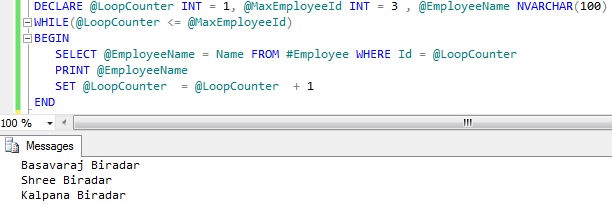
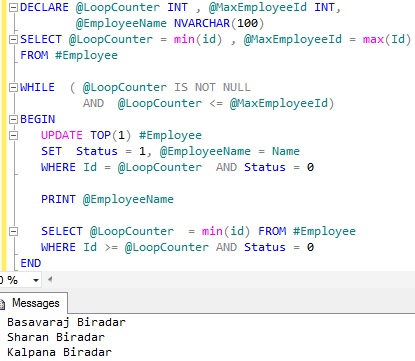

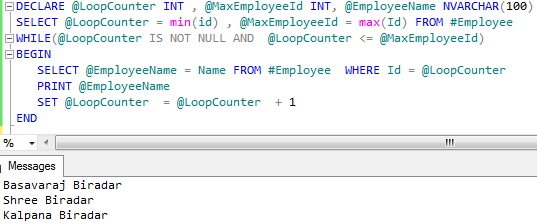
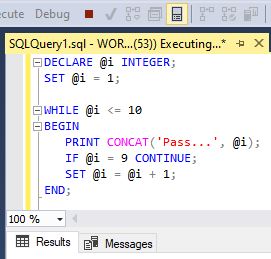

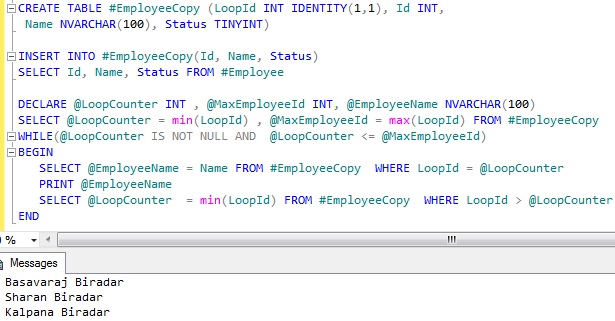






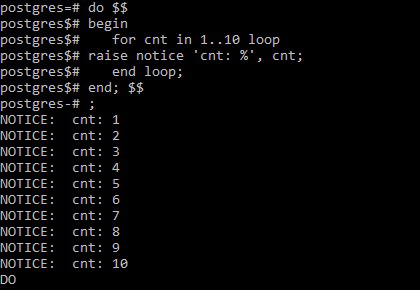


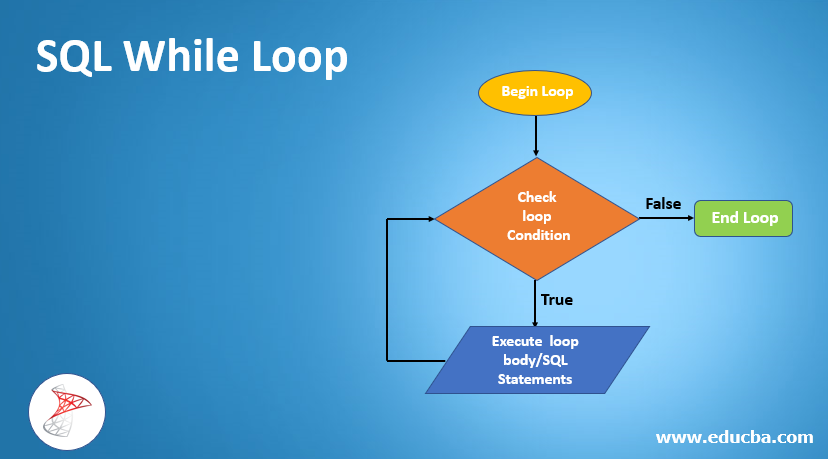




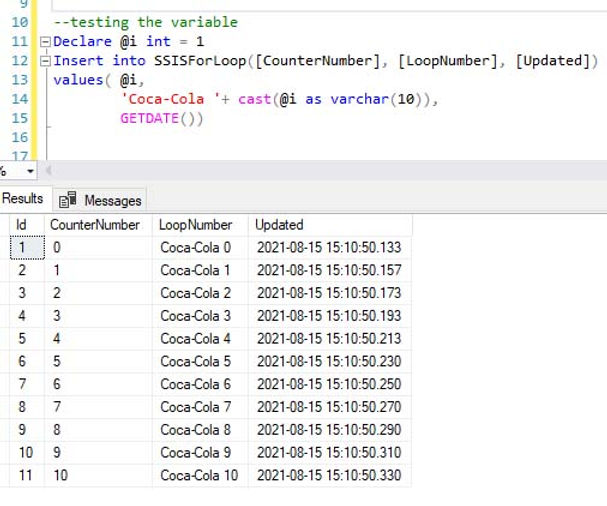
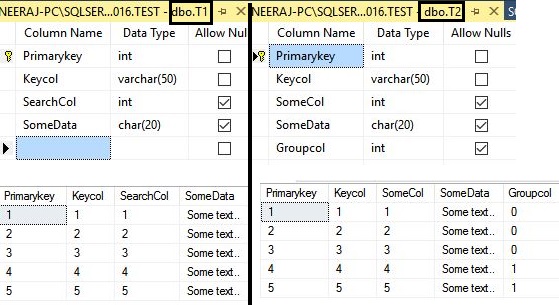
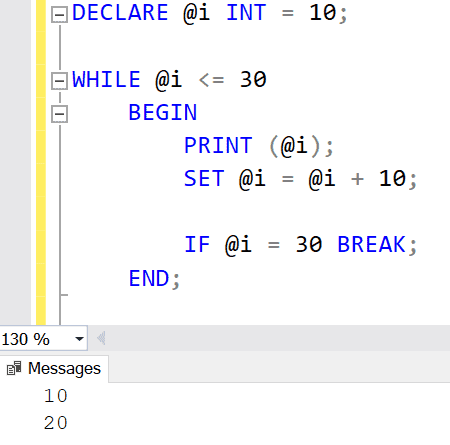
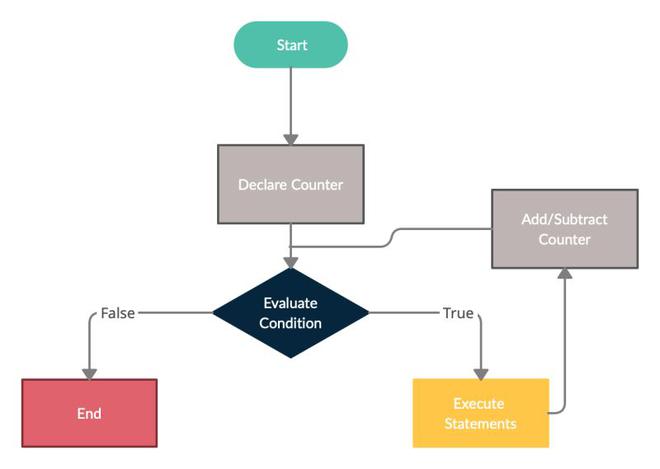
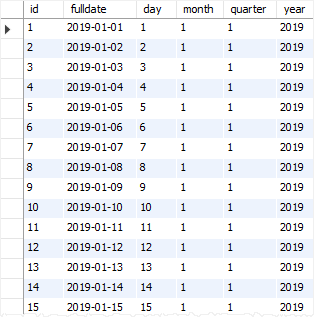



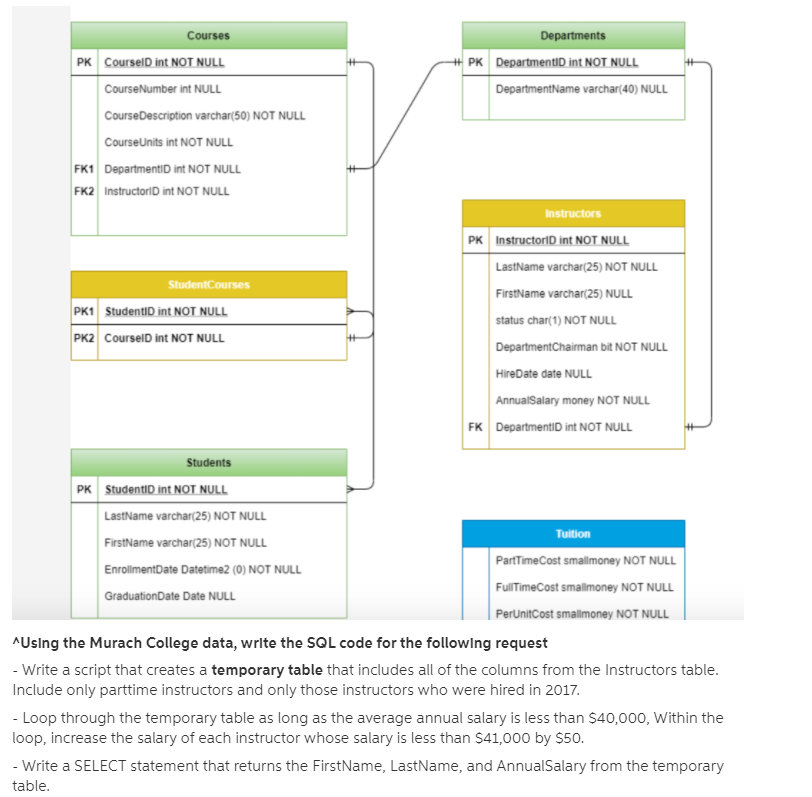

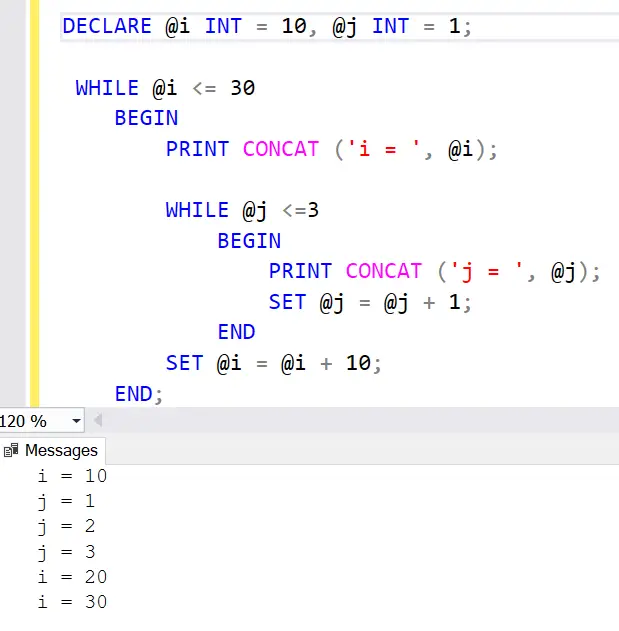





![PHP Loop: For, ForEach, While, Do While [Example] Php Loop: For, Foreach, While, Do While [Example]](https://www.guru99.com/images/2/php_for_loop.png)




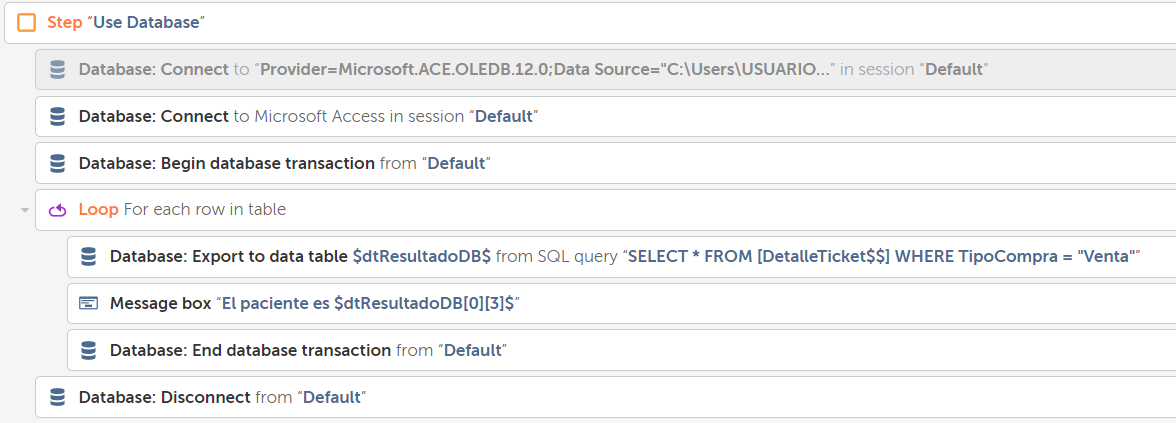


Article link: sql loop through table.
Learn more about the topic sql loop through table.
- SQL Server Loop through Table Rows without Cursor
- Is there a way to loop through a table variable in TSQL without …
- Loops in SQL Server – TutorialsTeacher
- PL/SQL Loop – javatpoint
- Dynamically creating Tables with while loop SQL – Stack Overflow
- PL/SQL – FOR LOOP Statement – Tutorialspoint
- loop through table records and execute Stored Proc with row …
- SQL WHILE loop with simple examples
- How to loop through table rows without cursor in SQL Server?
- Loop Through Table Rows Without Cursor in T-SQL
- Looping through table records in Sql Server – SqlHints.com
- Loop through all tables in a database – Burleson Consulting
- Dynamic SQL with Loop through each Table Rows using …
- How to loop through a table variable in SQL Server?
See more: https://nhanvietluanvan.com/luat-hoc/